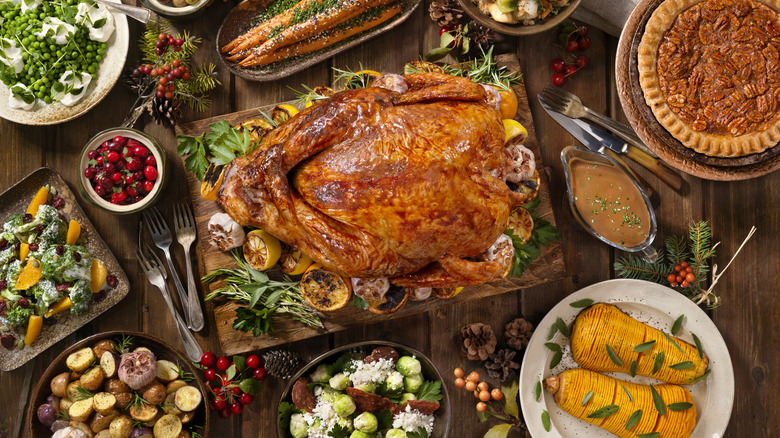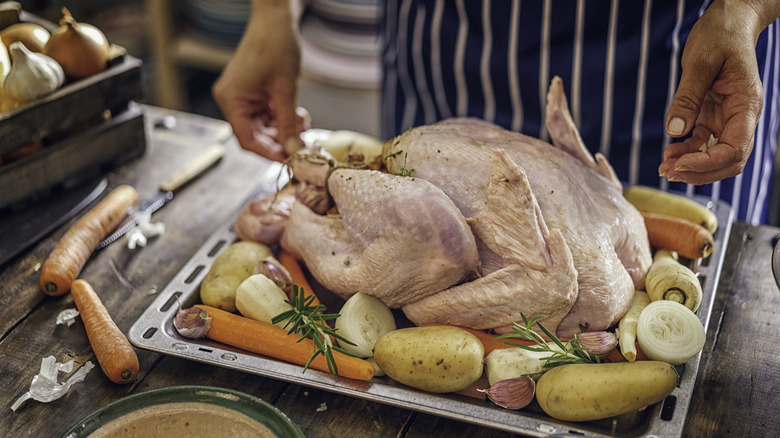How To Minimize The Risk Of Getting Sick From Your Thanksgiving Meal
We may receive a commission on purchases made from links.
The time to fill your plate with roast turkey, stuffing, gravy, and all the fixings is so close we can taste it. On the other hand, your Thanksgiving meal shouldn't come with a side of food poisoning that carries on for days afterward. As it turns out, your feast can make you and your guests sick if it contains foodborne illness-causing bacteria like salmonella.
This bacteria is somewhat of an invisible culprit, as it can infect food at any point in the cooking process without you even knowing. However, you'll piece it together when symptoms like stomach pains and nausea appear after gobbling up that meal. "The CDC does not collect data specifically related to holidays, but some foods people enjoy during Thanksgiving can lead to serious foodborne illnesses, if the foods aren't properly handled, cooked, stored, or reheated," Laura Ford, epidemiologist in the division of foodborne, waterborne, and environmental diseases at the CDC, shared with Today.
Despite these risks, there's no need to rethink your turkey day dinner plans. Reducing cross-contamination throughout preparation means you're in the clear for enjoying those hearty favorites — right up until it's time to throw out your Thanksgiving leftovers.
The best ways to avoid cross-contamination while preparing Thanksgiving dinner
It doesn't take much for cross-contamination to happen. Using the same cutting board to prep your turkey and chop veggies? It's contaminated. Not washing your hands after cracking eggs? Anything you touch becomes a breeding ground for harmful bacteria to grow and multiply. So, it all comes down to how you're handling the food, utensils, and other tools, as bacteria can transfer between these items and increase the possibility of food poisoning.
To keep cross-contamination at a minimum, Robert Gravani, professor emeritus of food science at Cornell University, tells Today that steps like cleaning your hands and sanitizing tools and surfaces often help eliminate the spread of bacteria. He also advises storing raw meats, seafood, and poultry in separate containers so their juices don't leech onto other foods.
The danger of contamination doesn't stop there, as Gravani encourages cooking all foods to a safe internal temperature to kill bacteria. This is especially true for turkey, which is done once it reaches a minimum internal temperature of 165 degrees Fahrenheit. Knowing the internal temperature is simple, as Amazon sells this digital instant-read meat thermometer that provides results in just a few seconds.
After enjoying seconds (and thirds) of that Thanksgiving feast, don't let those leftovers sit out too long. Doing so allows bacteria to grow rapidly and is one of the most common food storage mistakes. Aim to refrigerate any leftovers within two hours of serving.

